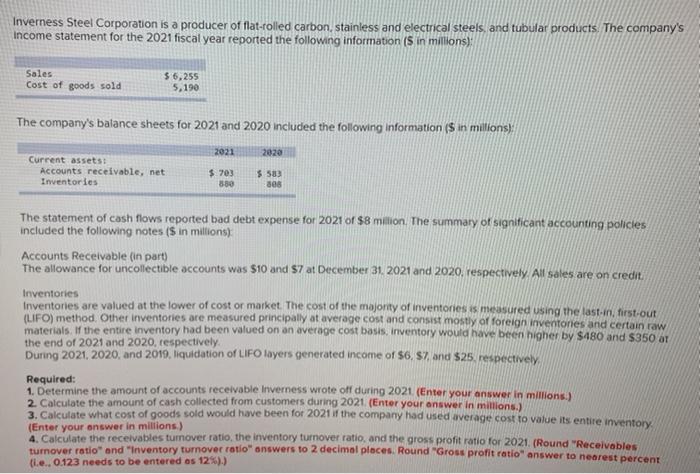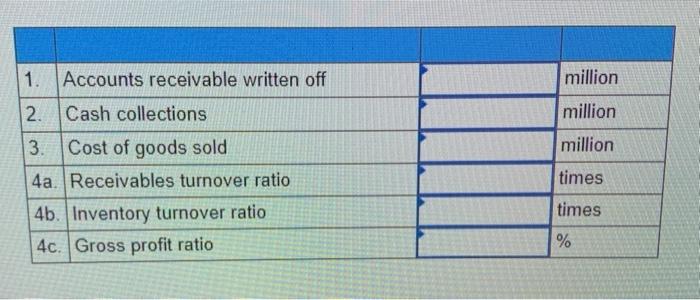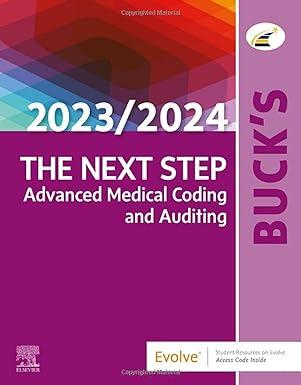Inverness Steel Corporation is a producer of flat-rolled carbon, stainless and electrical steels and tubular products. The company's Income statement for the 2021 fiscal year reported the following information (5 in millions): Sales Cost of goods sold 56,255 5,190 The company's balance sheets for 2021 and 2020 included the following information ($ in milions): 2021 2820 Current assets: Accounts receivable, net Inventories $ 583 $ 703 850 808 The statement of cash flows reported bad debt expense for 2021 of $8 million. The summary of significant accounting policies included the following notes ($ in millions) Accounts Receivable (in part) The allowance for uncollectible accounts was 510 and $7 at December 31, 2021 and 2020, respectively. All sales are on credit Inventories Inventories are valued at the lower of cost or market. The cost of the majority of inventories is measured using the last first-out (LIFO) method. Other inventories are measured principally at average cost and consist mostly of foreign inventones and certain raw materials. If the entire inventory had been valued on an average cost basis, inventory would have been higher by $480 and $350 the end of 2021 and 2020, respectively. During 2021, 2020, and 2019. liquidation of LIFO layers generated income of $6.57 and 525 respectively Required: 1. Determine the amount of accounts receivable Inverness wrote off during 2021 (Enter your answer in millions.) 2. Calculate the amount of cash collected from customers during 2021 (Enter your answer in min.) 3. Calculate what cost of goods sold would have been for 2021f the company had used average cost to value its entire inventory (Enter your answer in millions) 4. Calculate the receivables turnover ratio, the inventory turnover ratio and the gross profit ratio for 2021. (Round "Receivables turnover ratio" and "inventory turnover ratio answers to 2 decimal places. Round "Gross profit ratio answer to nearest percent (i... 0.123 needs to be entered os 125).) million million million 1. Accounts receivable written off 2. Cash collections 3. Cost of goods sold 4a. Receivables turnover ratio 4b. Inventory turnover ratio 4c. Gross profit ratio times times %








